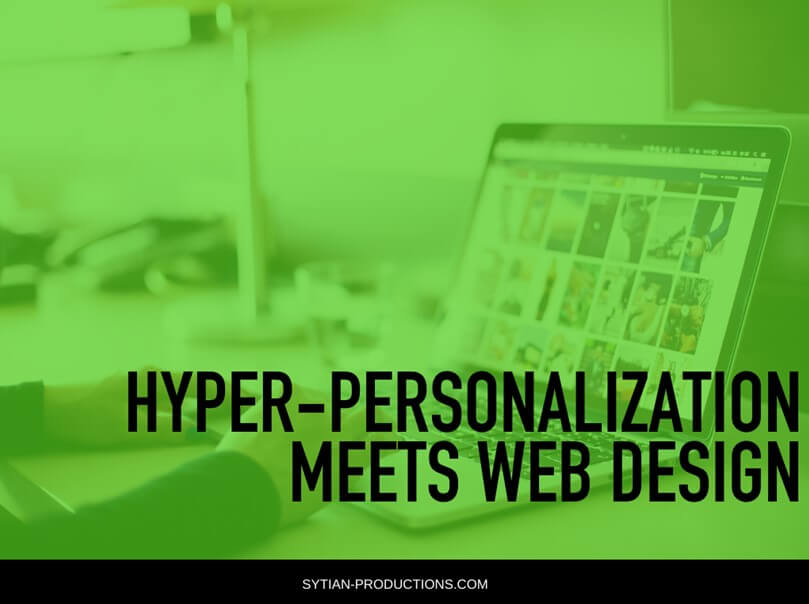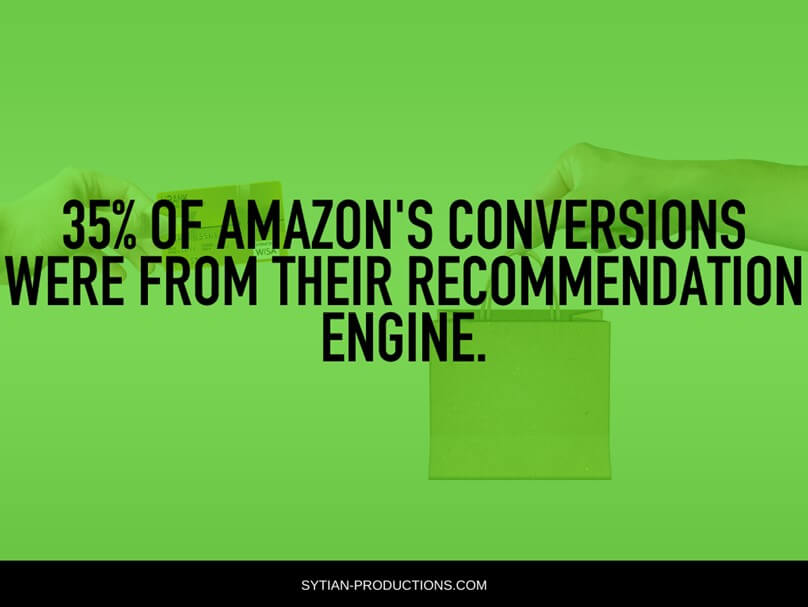Hyper-Personalization Meets Web Design
Hyper-personalization is probably one of the most important factors in web design, especially during recent years. Consumers in all industries have become demanding over the years as they continuously search for an online experience that is customized to meet their needs and expectations.

Nowadays, hyper-personalization is present in almost every digital interaction. From social media to advertisements, and even with email marketing. When used correctly, this can help website designers create dynamic and highly customized content for your visitors and users.
What is Hyper-Personalization?
This is a combined behavioral and real-time data you can get from your customers. An example would be when a shopper browses through your website for clothing, your site would simultaneously recommend a similar product based on their search history.
To be able to make this process successful you need to have a deep understanding of your brand and your products and services. That way, you’ll be able to devise a personalized marketing strategy.
You also need to find the right technology and infrastructure to support the process and techniques needed for hyper-personalization. One of these includes implementing multichannel options that keep your customer information across your offline and online channels. Doing this lets your customers have a seamless shopping experience, whether they are doing online shopping or on your retail store in-person.
Hyper-personalization techniques are crucial to the future of more companies, regardless of the industry they are in. This is because customers’ shopping preferences also evolve.
In order to create a personalized and meaningful experience for your customers, here are some steps you need to take:
1. You need to segment your audience
You need to determine the demographics of your site visitors before planning and starting the changes with your website developer and designer. Knowing your website visitors’ devices is also essential because you’ll be able to know their behavior patterns efficiently. It is also wise to know how your visitors arrived at your site, is it through an organic or paid advertising campaign?
2. Determine Your Budget
Another crucial factor in updating your website to be hyper-personalized is determining your workable budget. It is also important to determine who on your team can manage customer interactions. If you’re a solo entrepreneur, then outsourcing this kind of work would be most convenient to meet the demands of your website visitors.
3. Embrace the Technical Challenges
In order to make this process work for you, your website, and your business, you should also embrace the technical challenges that come with hyper-personalization. You should shift your focus on specific data and remove those non-actionable items that no longer apply to your new process. Enlisting help from a website developer lets you seamlessly update your website to include a direct interaction and measurement of your visitors.
Importance of Hyper-Personalization for Your Website
Personalizing your customers’ experience has always been a huge factor in your marketing and sales journey. Eliminating obstacles in your sales funnel that may complicate your customers’ purchasing journey lessens the efforts on their end to get what they want.
This also lifts the overwhelming feeling from your customers from a large selection they have to go through. This is made possible through product recommendation algorithms. This also helps you attract more customers by keeping their attention by addressing their pain points in doing their shopping and saving them time by offering them your most efficient solution.
Brands that are Doing Hyper-Personalization Right
Amazon
The online retail giant has perfected the art of hyper-personalization through product recommendations and suggestions. In fact, 35% of its conversions were from their recommendation engine, this is according to a report from Martech Advisor. But you see, Amazon’s hyper-personalization doesn’t stop there, as they also make use of their email channel too. If a browser searches for shoes, they will send an email suggestion for items related to that search.

Amazon collects data to generate its hyper-personalized communication with its customers. Information such as full name, average time spent searching for a product, search query, brand preference, and other browsing habits too.
Spotify
Another is Spotify, dubbed as the leading music streaming app that offers a wide variety of playlists tailored to their subscribers’ preferences. After they are done cross-analyzing personal music selections with other subscribers who chose and listened to the same song, it creates a hyper-personalized playlist for all of its subscribers.
Spotify also has The Live Concert Feature which sends its subscribers emails to let them know about the events of their favorite artists, along with the option to purchase tickets, which is highly convenient for a subscriber.
Starbucks
Starbucks, the coffee giant, has found a way to maximize mobile in-app and push notifications for their mobile app. They use real-time and artificial intelligence (AI) collection tools. It promotes offers that are relevant to its customers and use their experiences by building them a personalized interface in the mobile app.
It also recommends drinks and food through its email marketing and mobile app. This is a serious upgrade from the brand and sends out more than 400,000 different hyper-personalized messages to its customers. All of which are based on their activities, past purchases, and preferences.
Hyper-Personalization is Essential in 2021
As hyper-personalization continues to influence the way brands are connecting and reaching out to their audiences and customers, techniques related to it will become increasingly essential to the growth of their businesses. It is crucial to create a plan in place to specifically address the needs of their customers.
This year, more and more customers would continue to seek more personalized experiences when they interact with your website and this is most critical for your business. Creating effective hyper-personalization strategies is the key to building your customer trust and loyalty.
Your hyper-personalization efforts would not only help you increase and improve your revenue growth, but it also caters well to your customers’ needs, leading to better customer experience satisfaction.